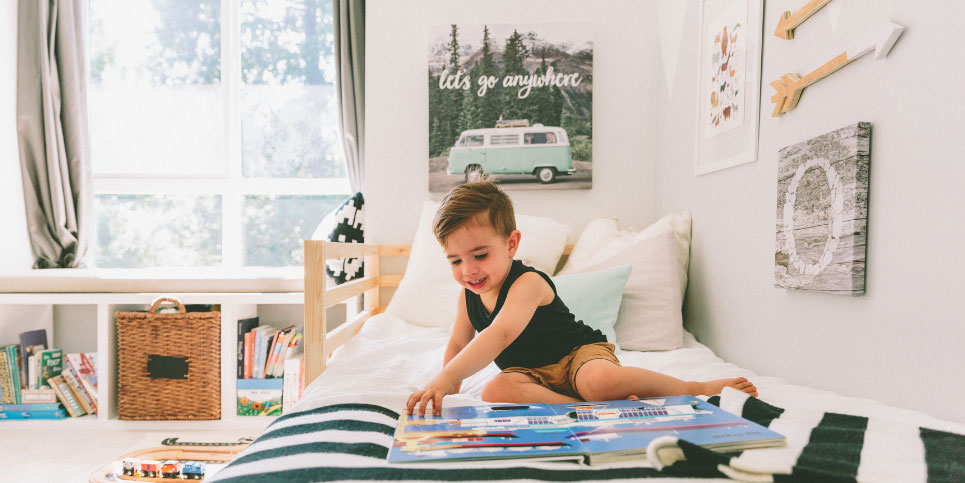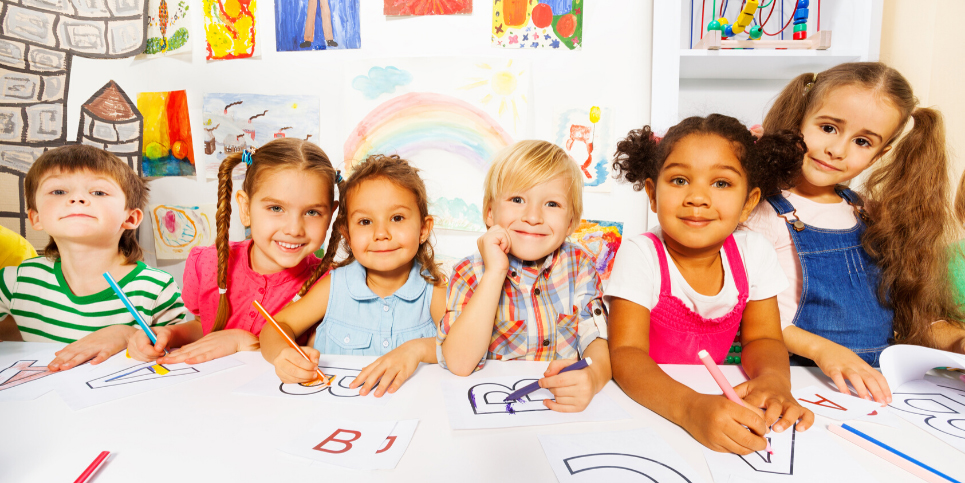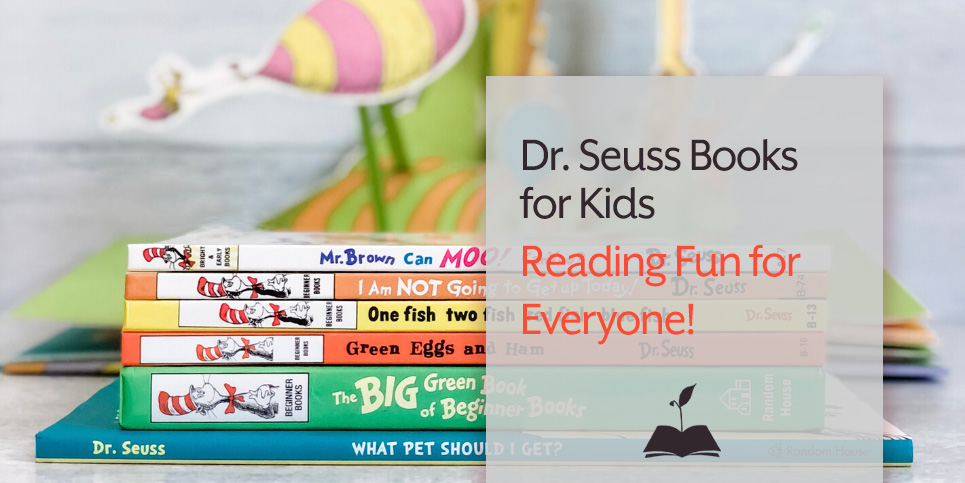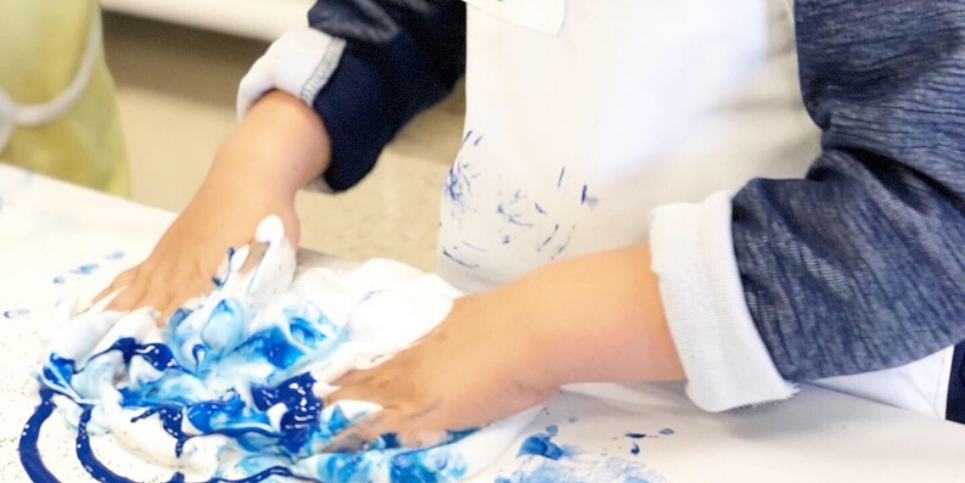The Children’s Book Review | March 14, 2020
Growing Readers: Learning to Love Reading and Writing Column 10
This editorial article was written by Lizzie Mussoline, M. Ed.
Fun Ways to Help Boost Your Child’s Pre-Reading and Literacy Skills
If you have a kiddo that will be heading to Kindergarten in the fall, perhaps you are curious to know if they are prepared or not. We hope this information will help guide you so that you both have a smooth transition to elementary school. Although children at this age all develop and hit milestones at different times, there are definitely a few things you can start doing now to help boost your child’s pre-reading and literacy skills in ways that are quick, easy, and best of all, FUN!
 Create a Love of Reading and Learning at Home
Create a Love of Reading and Learning at Home
One of the easiest, yet most important things, you can do to prepare a child for elementary school is to create a love of reading at home. This can be done in so many ways that feel natural to your family.
- Scatter bins of books all over the house, in every room.
- Have each child create a special and cozy “book nook” where they can escape to look at the beautiful illustrations in a book, or have an older sibling read aloud to them.
- Visit your local library and bookstore as often as possible and go to the various story times available in your hometown.
- Rotate the books that are on display on your bookshelves often to help peak interest and curiosity among different books and genres.
- Listen to audiobooks in the car, on planes, or road trips.
- Make sure you are modeling reading whenever possible, reading aloud as often as possible, and getting excited about the characters you meet, or facts you have learned.
This in itself will not only prepare your child for school but help to nurture a lifelong learner – the greatest gift you can give a child!
Teach Your Child the “Concepts of Print”
The “Concepts of Print” refer to recognizing and distinguishing various features of print/books and how readers use them. These concepts include:
- Identify the front and back cover.
- Point out vocabulary words such as author and illustrator.
- Show children that we read from left to right and from top to bottom.
- Help children start to understand that words have meaning.
The next time you are reading together, point out these concepts and do so until your child starts to point them out, and tries to teach you or others.
Help to Introduce and Teach Phonological Awareness
Phonological awareness is hugely important because it is the foundation for learning to read. It is the ability to identify, play with, and manipulate sounds in spoken language. Some children pick it up naturally, but others need a bit more help figuring it out. We love these tips from Reading Rockets on how to work on these skills at home!
- Check with your child’s teacher or principal to make sure the school’s reading program teaches phonological and phonemic awareness, and phonics skills.
- If your child is past the age at which phonemic awareness and phonological skills are taught class-wide (usually Kindergarten to first or second grade), make sure he or she is receiving one-on-one or small group instruction in these skills.
- Do activities to help your child build sound skills (make sure they are short and fun; avoid letting your child get frustrated):
- Help your child think of a number of words that start with the /m/ or /ch/ sound, or other beginning sounds.
- Make up silly sentences with words that begin with the same sound, such as “Nobody was nice to Nancy’s neighbor.”
- Play simple rhyming or blending games with your child, such as taking turns coming up with words that rhyme (go – no) or blending simple words (/d/, /o/, /g/ = dog).
- Read books with rhymes. Teach your child rhymes, short poems, and songs.
Practice Writing Their Own Name
Make sure your child can write their own name. This can be done in many fun and multisensory ways!
- You can use whiteboards and whiteboard markers or use whiteboard markers on the windows in your home.
- Trace in salt or sand trays, or use shaving cream.
- Have your child form letters in clay or play-doh, too.
Multisensory techniques (using more than one sense at a time) activate the brain in many different ways so that each sensory system becomes more developed and higher functioning, which also helps to retain information!
Help Build Alphabet Knowledge
Kindergarteners should have a good sense of the alphabet. They will teach and reinforce alphabet knowledge in Kindergarten, but giving your child a head start would be great. This can be done in various ways, as well. For example:
- Make sure you have a visual of the alphabet in your home.
- Sing the alphabet when washing hands or brushing teeth.
- Pick up some alphabet magnets, wooden alphabet puzzles, Alphabet Bingo or Go Fish.
- Read ABC books together.
- If you care to be a bit more organized, introduce a letter of the week and go to town on Pinterest, looking for craft ideas to help reinforce each letter of the alphabet.
Depending on the time you have and your parenting style, make a plan that works for you!
Resource: Reading Rockets, Phonological and Phonemic Awareness, accessed March 9, 2020, <https://www.readingrockets.org/helping/target/phonologicalphonemic>.
Thank you for reading the Growing Readers: Learning to Love Reading and Writing column. Bookmark this Growing Readers Column link or subscribe to our e-newsletter so you do not miss out on the monthly reading tips. What Does Kindergarten Readiness Really Look Like? was written by Lizzie Mussoline, M. Ed.—follow her on Instagram: @wildflower_learning_denver.





